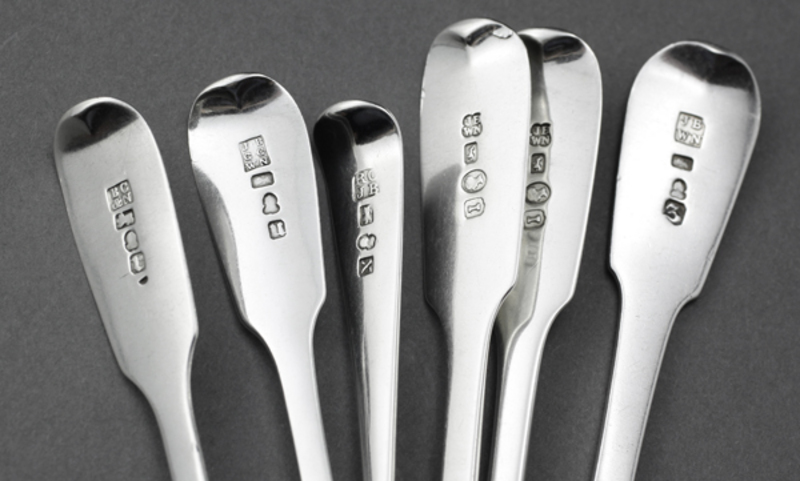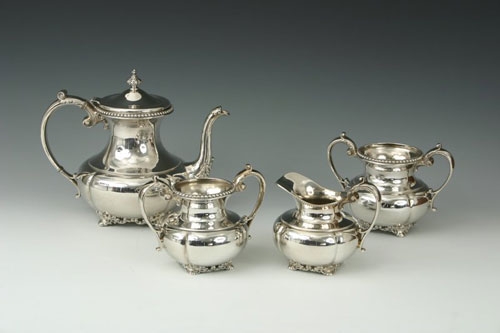Wheel Polishing
This is best to be avoided as it can render a piece less valuable. Even some professionals can overuse the wheel and result in the loss of valuable information on the surface.In cases of extreme tarnish and/or corrosion, it may be necessary to take the item to a jeweller or silver repair company. There the tarnish can be removed with jeweller’s rouge. This is sometimes referred to as putting an item on the wheel. While this method does remove tarnish, it also removes the patina, or fine scratches which give antique silver its beautiful glow, leaving in its place the shiny look of stainless steel. Thus, this method is avoided by serious silver collectors in favour of hand polishing.
Silver Dips
These commercially sold silver dips are an abomination and should not be used for instant polishing of cherished silverware. Most dips work by turning the tarnish from its natural dark colour to a cloudy white haze, somewhat akin to the idea of trying to hide a tattoo with skin-coloured magic marker ink. Either type of commercially sold dip results in a permanently damaged piece. See and avoid.
It is possible to try cleaning a piece of silver by immersing it in some sort of liquid as opposed to fingerpainting it with foam. There are several mild chemical combinations which will gently attract some sulphur away from a piece of silver. One of the simplest involves dissolving baking soda in warm water in a glass bowl, then inserting both the silver item and a piece of aluminum foil. You’ll know it’s beginning to have some effect when you catch a whiff of eggs rising from the water. This does not give particularly impressive results.
Serious sterling collectors avoid silver dips. One reason is that silver dip tends to brighten areas of the design that should remain dark in order to give a relief effect. This is especially important in pieces that have Repouss and chasing. Another reason is the difficulty in removing the end product of the conversion, which usually requires an abrasive cleanser and abrading the surface is one of the most effective ways of destroying a piece’s value.
Caveats
A few cautions should be noted. Sterling silver is a very soft metal that is easily damaged. Be careful not to dent the piece by knocking it against a sink or other hard surface. It is important to be very gentle too with sterling hinges, such as those on teapots and boxes, as these can be easily bent by mishandling.
Do not use a toothbrush or other bristled brush on sterling, as this will permanently scratch the surface.
Frequency of Polishing
Sterling that is continuously on display, such as a tea service or candelabra, will need more frequent polishing than pieces that can be wrapped and stored. Much of this depends on the amount of sulphur in the environment. City dwellers living near high automobile traffic, for example.
Storage
Simple sealable food storage bags, or dry cleaning bags for larger pieces, will inhibit tarnish from accumulating on stored pieces. Make sure that the item is thoroughly dry before storing, however, as trapped water will cause corrosion.
Several sources indicate that storage in plastic bags can do more harm than good, since poor quality plastic emits gases that cause corrosion and tarnish. Make sure a good quality bag is used. Polyethylene sealable food bag in conjunction with a silver cloth or acid free paper. This will provide good protection.
Washing
Don’t wash sterling and stainless together. If they touch, a chemical reaction may occur, resulting in black spots on the sterling. Use a mild dishwashing liquid, and don’t apply undiluted dishwashing liquid directly to sterling. Detergents containing phosphate can turn sterling brown.











